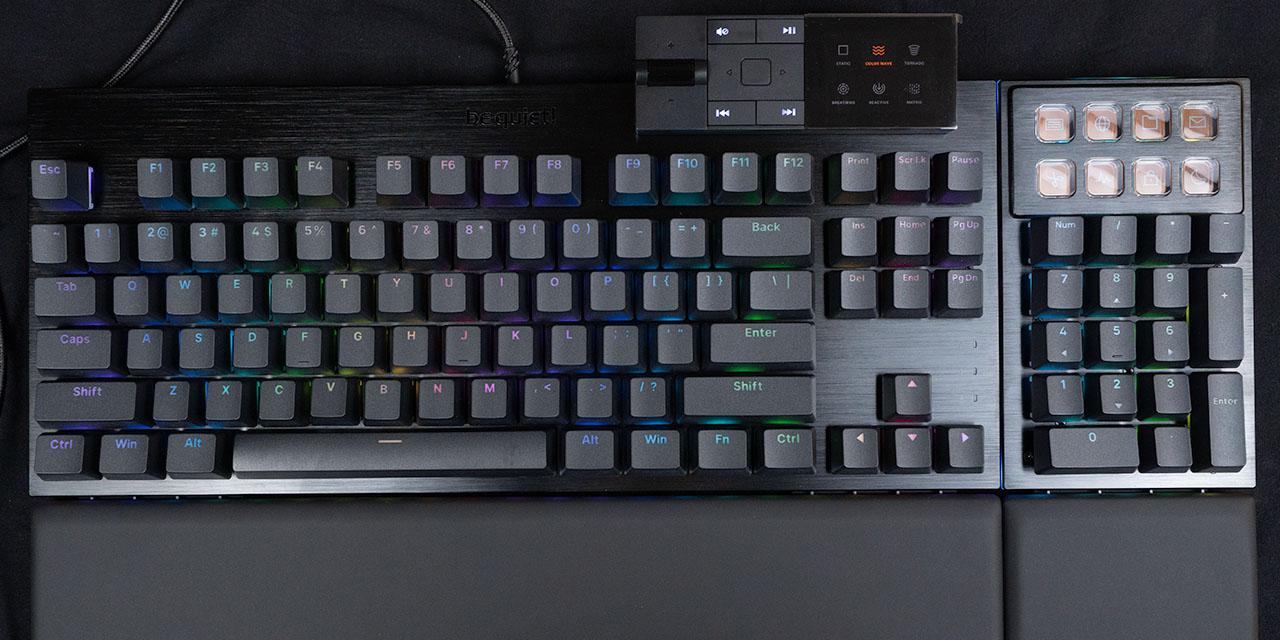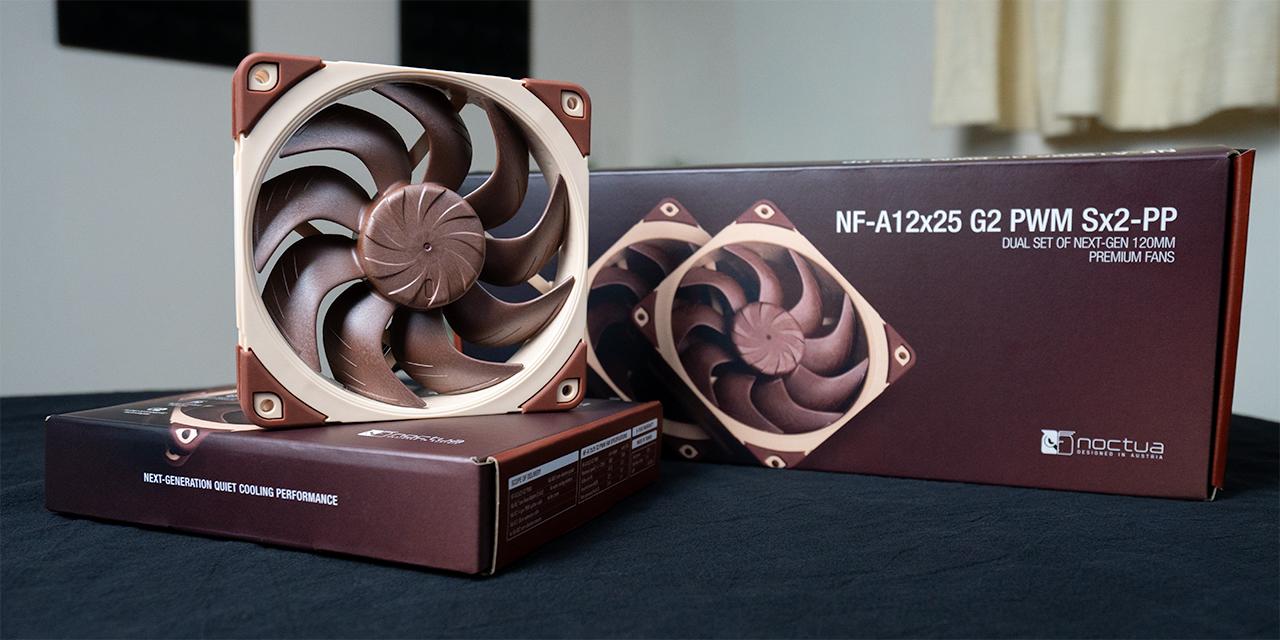Page 3 - A Closer Look, Board Layout
As far as color scheme goes, the Asus P5K3-Deluxe is built upon a dark-chestnut colored -- almost black -- PCB. The design is almost identical to the Asus P5K-Deluxe with exception to the heatpipe design; in which a greater quantity and a more complex heatpipe system is implemented on the DDR3 board.
Copper heatpipes start from the ICH9R southbridge and leads up into the P35 northbridge. It then leads out in both directions for an almost-complete perimeter heatpipe system a distance around the CPU socket. Heatpipes leading left in relation to the northbridge brings heat to the rear of the motherboard for I/O backplate heat exhaust; while traveling right leads the pipe going through between RAM slots and the CPU socket and cooling additional motherboard components at the top.
With the ever-popular trend, the P5K3-Deluxe features 100% solid state aluminum capacitors instead of 'classic' electrolyte capacitors. This will extend lifespan (If you are going to use your computer for that long), but also features no risk of exploding capacitors. Asus generally does not have this problem anyway, but regardless it is a nice change!
As usual from Asus' higher end motherboard offerings, the Asus P5K3-Deluxe incorporates Asus' Stack Cool 2 design where a layer of metal is integrated into the motherboard to spread heat generated by components around more evenly. Through this, it lowers the amount of concentrated heat spots in one area but instead spread over a larger surface area for better heat dissipation.
An array of capacitors are placed close to the CPU socket; but are generally low enough to accommodate majority of CPU heatsinks. I had no problems installing the Scythe Infinity. Again, as you can see in the photo above, it demonstrates Asus' standard 8-phase power design with its last few generation of motherboards of this class (Count the black blocks).
The advantage of 8 phase power designs is that it will theoretically reduce the requirements for input ripple currents. Low voltage ripples allow the CPU to operate at a more stable voltage and thus create more opportunity for higher overclocks.
Because power consumption is directly related to input ripple current, there will be a slight decrease in power usage over motherboards with a 4 phase power design. When less power is used, less heat will be generated. This increases stability and life span of a CPU.
The DDR3 RAM slots are color coded in orange and black, to allow the user to visually identify channel A and channel B. As with the Asus P5K-Deluxe, even RAM on this motherboard has a single phase power design.
Since the RAM slots are placed lower than other motherboards, it gets quite close to the first PEG slot. With a long enough graphics card, it may interfere with DIMM clips, since there's less than a centimeter clearance between the two.
Floppy IDE connector is located on the right edge above the 24-pin power connector; both well placed in my opinion. The P5K-Deluxe does not require auxiliary power; as many of our previously tested motherboards required a Molex connection from the power supply.
Also shown is the Winbond W83627DHG chip.
This is a true heatpipe and heatsink city.
As mentioned earlier, the Asus P5K3-Deluxe utilizes a heatpipe system that encloses the perimeter around the CPU socket, as compared to the P5K-Deluxe in which Asus opted for a classic single route 90 degree angle heatpipe implementation instead. Two dual heatpipes lead away from the P35 northbridge in both directions for heat dissipation and exhaust. An included optional fan can be separately installed.
Since the power consumption of the P35 chipset is fairly low (Hey, much better than those sizzling NVIDIA chipsets), we found that cooling performance is very acceptable. Even as we overclock, the chipset's temperature peaked at 47c with minimal airflow -- offering slightly better performance than the Asus P5K-Deluxe. It is very hard for a chipset to perform well in our test system, since my obsession with quiet systems result in low RPM fans. Low RPM fans usually move less air in sacrifice of heat.
Lower right hand corner of the motherboard. Six SATA connectors are present. Unfortunately, two SATA connectors are located directly to the right of the primary PEG slot. An 8800GTX is guaranteed to block out at least a couple -- any thicker will cause you to lose four SATA ports. An Asus X1950 Pro takes out two; but might be able to redeem one through utilization of an included angled SATA cable.
Above case I/O connectors is a JMicron JMB363 controlled PATA port. This is due to the lack of native PATA support with Intel's ICH9R; also resulting in a slightly weird placement of connector. I was able to carefully wire a rounded IDE cable used with my NEC burner to make it less noticeable, but there are better locations on the motherboard to place it. In general, the Asus P5K-Deluxe is the happiest with SATA burners -- widely available at a low cost these days.
As usual, Asus' standardized Q-Connector is included. Since all Asus motherboards use the same case I/O connector design, when I installed this motherboard I simply used the pre-existing Q-Connector block I had and plugged it into the P5K3-Deluxe. Absolutely no problems at all.
In terms of add-on card interfaces, two PCIe x16 slots are present. Up to three PCI devices can be accommodated with the slots; however chances are that users using this board will have a dual slot graphics card -- unfortunately, it's really that common. Two PCIe x1 slots reside above the first PEG slot. I can't say whether or not you would consider this a design fault, but a long PCIe x1 card cannot be installed because it is blocked by the RAM. There's no really long PCIe x1 cards, but if one rolls out in the future, then we've got a problem. When Asus releases their Xonar D2 sound card in PCIe x1 form, it would be too long if it's the same length as the PCI version.
The placement of CMOS battery near the first PCIe x16 slot is a bit odd -- if you ever need to remove the battery, chances are than you'll need to remove your graphics card as well.
Along the bottom is an internal Firewire connector (Red), as well as a couple of USB internal connector blocks (Blue) for up to four ports. The bottom left corner of the motherboard is where case audio connectors go.
The left edge is the physical home of an array of chips and controllers -- Realtek RTL81100SC LAN controller, JMicron JMB363 (SATA and PATA), and ADI SoundMAX 1988B high-definition audio codec.
Finally, we are going to talk about the I/O backplate. It is identical to the Asus P5K-Deluxe -- a welcoming change that we've previously praised is the discard of one PS/2 port for two USB ports at the top. I mean, who still uses PS/2 peripherals anyway? ;)
S/PDIF outputs include the standard optical and coaxial out. Four more USB ports are located on two different blocks with a Gigabit network adapter each. Between the two is a block with two eSATA ports and a Firewire port. Six 3.5mm analog ports comes in standard, along with a Wi-Fi antenna connector. The antenna is included out of the box, and we'll discuss the software side of this in just a moment.
Wi-Fi is powered by a Realtek controller.
Page Index
1. Introduction, Features, and Specifications
2. Bundle, Chipset, BIOS
3. A Closer Look, Board Layout
4. Test System; Benchmark: 3DMark06
5. Benchmark: PCMark05
6. Benchmark: Cinebench 9.5, SuperPI 1M
7. Benchmark: EVEREST CPU
8. Benchmark: EVEREST FPU
9. Benchmark: EVEREST Memory
10. Benchmark: EVEREST Memory Latency, HDTach 3.0.1.0
11. Onboard Sound, Wi-Fi, Overclocking, Conclusion





